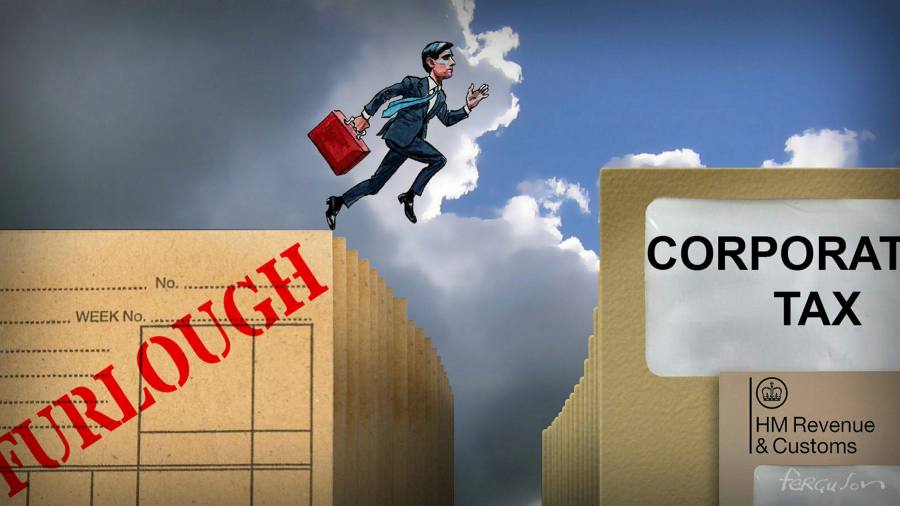[ad_1]
In his response to the Covid-19 crisis, Rishi Sunak, chancellor of the exchequer, has shown himself to be flexible and pragmatic. This Budget reinforces that impression. But it tells us four more important things. One is that the pandemic is going to leave a nasty long-term legacy. Another is that Sunak wants to hold on to the mantle of fiscal sobriety. A third is that this government is abandoning the economic ideas it clung on to for so long. The last is that the government has no growth strategy. One might describe this as old-fashioned realistic Conservatism. An alternative label might be defeatism.
As expected, despite the success of the vaccine rollout, Sunak has had to extend the expensive support of the economy. If government feels obliged to compel people to stay at home and businesses to close, it has to compensate them. Thus, the furlough scheme will be extended to September, as will support for the self-employed. The universal credit uplift of £20 a week will also continue for a further six months. In all, Sunak has raised the pandemic-related support to households, businesses and public services by a further £44.3bn, so taking its cost to £344bn or 16 per cent of gross domestic product.
In all, the pandemic is certainly among the most devastating shocks experienced by the UK in peacetime. The human toll is the most tragic. But the economic cost is also huge. In 2020, GDP per head shrank by 10.4 per cent, the largest in 300 years. The Office for Budget Responsibility also forecasts public sector net borrowing at 16.9 per cent of GDP in 2020-21, a level never before seen in peacetime. It is forecast still to be 10.3 per cent of GDP in 2021-22.

Unfortunately, despite a somewhat better outlook than expected last November, the economic shock is still forecast to be not just deep, which we knew, but enduring, which we feared. Thus, the OBR assumes that the pandemic will lower output by 3 per cent relative to its pre-pandemic path in the medium term. Alas, that pre-pandemic forecast path was already pretty poor. In sum, after 4 per cent in 2021 and 7.3 per cent in 2022, economic growth is forecast to slow to 1.6-1.7 per cent annually.
A permanent loss in output was expected to deliver a permanent fiscal hole. But, in one respect, Sunak remains a Conservative chancellor. He insists on a return to fiscal sobriety. The measures he proposes are forecast to contain the pandemic-induced jump in public sector net debt to no more than 25 per cent of GDP between 2019-20 and 2023-24. The debt ratio is then forecast to fall from 110 per cent of GDP in 2023-24 to 104 per cent in 2025-26. The gap between current receipts and managed expenditure is also forecast to be cut to 2.8 per cent of GDP by 2025-26. At that point, the government would again be borrowing just for investment.

To achieve this, taxes are forecast to reach 35 per cent of GDP in 2025-26, the highest level since the late 1960s, when Roy Jenkins was chancellor. The last time the tax ratio was much higher than this was after the second world war. This is one key respect in which this government is indeed different from its predecessors. George Osborne achieved almost all his post-financial crisis fiscal consolidation via cuts in spending. This time, taxes will rise instead. More startlingly, it is not just any taxes, but taxes on business that will jump. The rise in the headline rate of corporation tax from 19 to 25 per cent is a remarkable reversal of Osborne’s cuts from 28 to 19 per cent. Even more astonishingly, this is the first increase in the headline rate since 1974. The changes are expected to raise £17bn (some 0.6 per cent of GDP), the bulk of the revenue increase planned by Sunak. Pursuing consolidation this way is a startling reversal of usual Tory policy.
Politically, the package seems adroit. Lobbies for lower public spending and lower business taxes are hardly powerful now. But the question is whether the strategy is sufficient to confront the huge challenges facing post-Brexit and post-pandemic Britain. The answer, I fear, is that it is not.

In the short run, the main stimulus to recovery, apart from the support package itself, is the two-year temporary 130 per cent “super-allowance†for capital spending. At most, this will bring investment forward. Worse, in the long run, as the OBR states: “The increase in the corporation tax rate will increase the cost of capital, lowering the desired capital stock and business investment in the medium term.†A better arrangement would have been to raise both the tax rate and capital allowances permanently. But that would not have raised the revenue the chancellor seeks.
There is an obvious doubt whether the recovery will be strong enough to reduce the long-term scarring below what the OBR now expects. But far more important is where future growth will come from. There are a number of gestures in the direction of “levelling upâ€. But none of them looks big enough to change the overall picture, which is of a country with huge gaps in regional productivity, poor productivity performance and low rates of investment. A UK Infrastructure Bank with capital of £12bn will not amount to much. Where is the ambition for investment? Where is the plan for environmental policy? Where, for that matter, is the discussion of carbon pricing?
After the massive response to the pandemic, the needed long-term vision for a country facing an uncertain future is absent. If the one big innovation is an unexpectedly large tax on corporations, what is the plan for economic growth? These are not the Conservatives of old. But these new ones, alas, lack bold ideas.
[ad_2]
Source link





